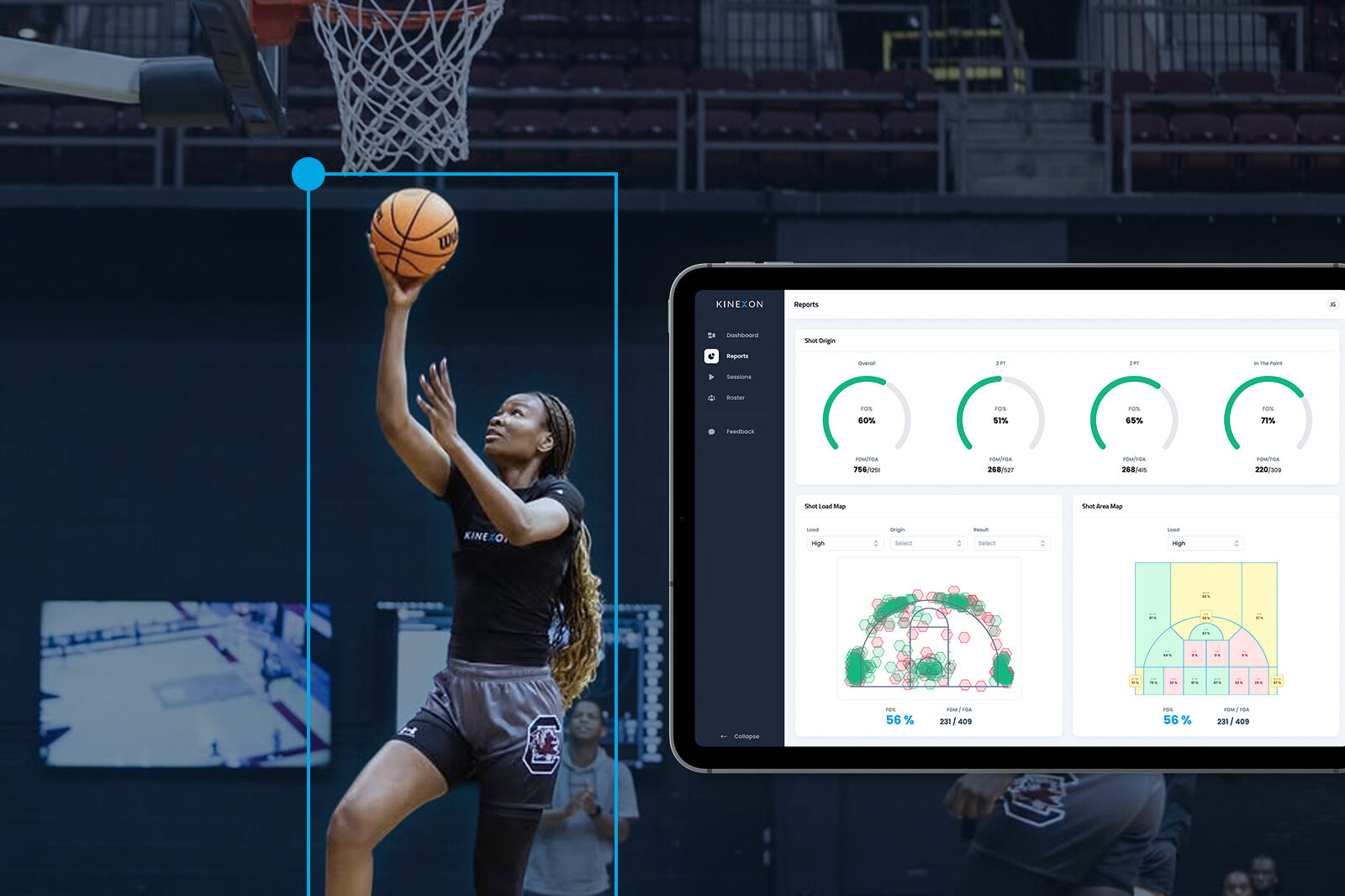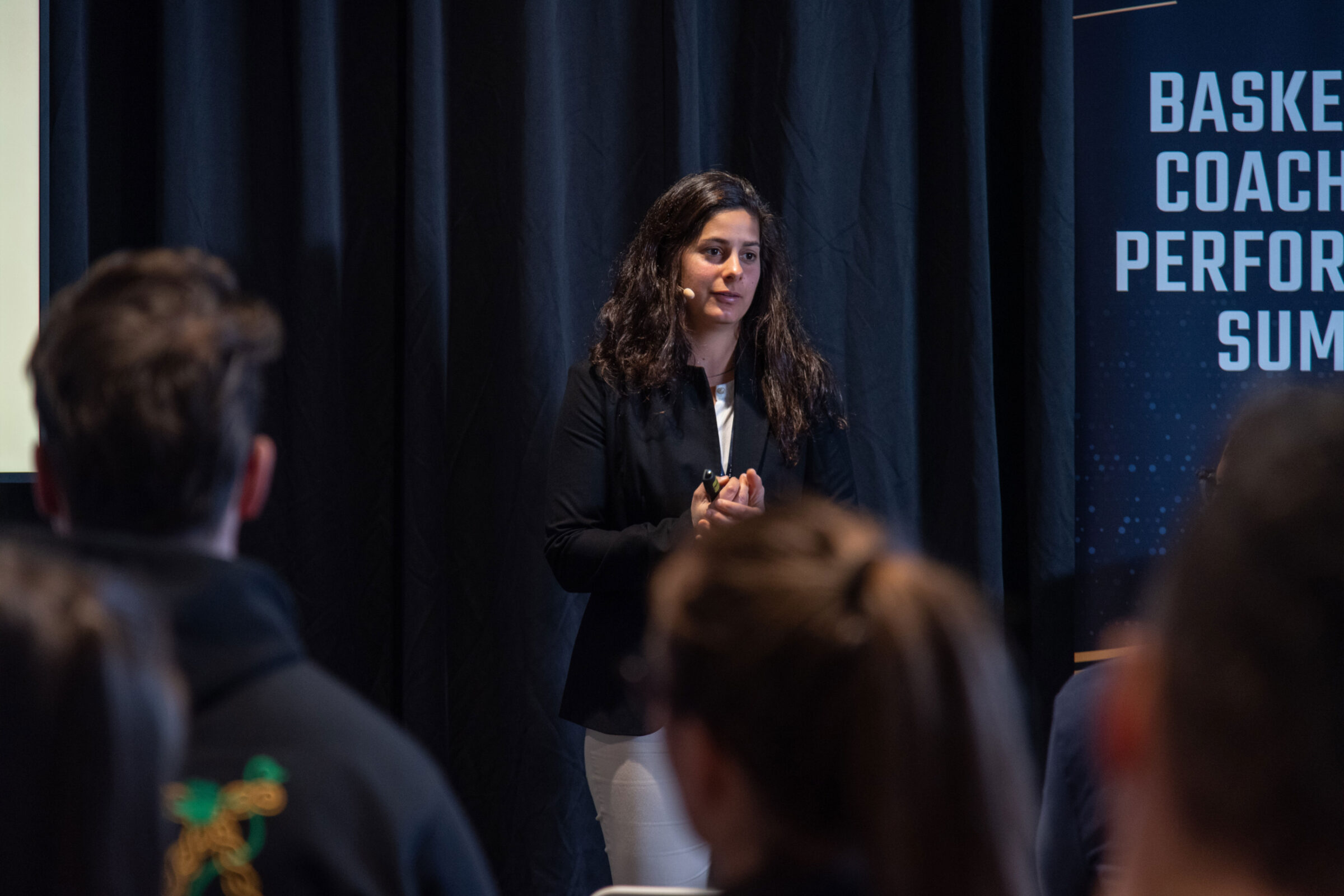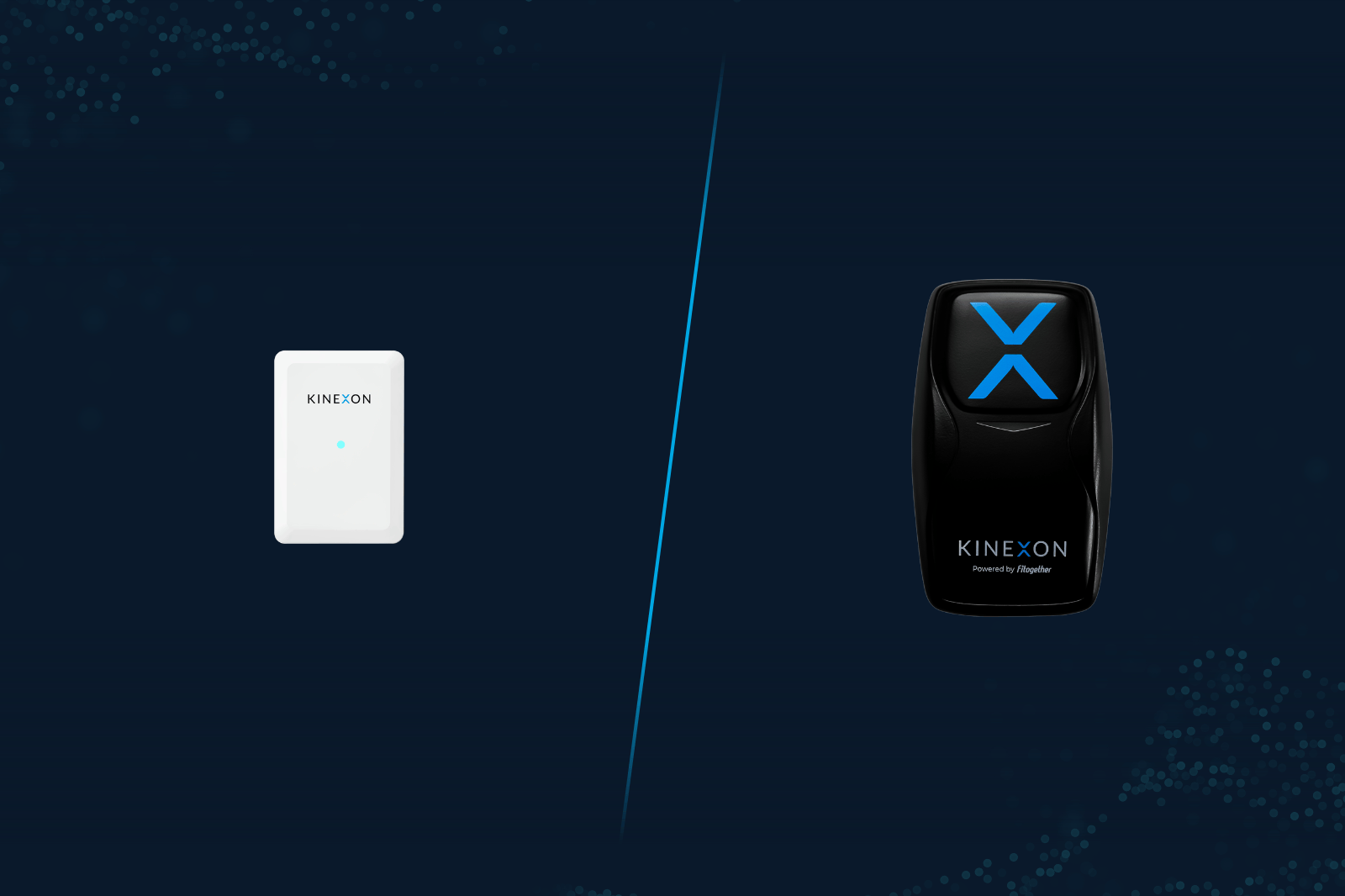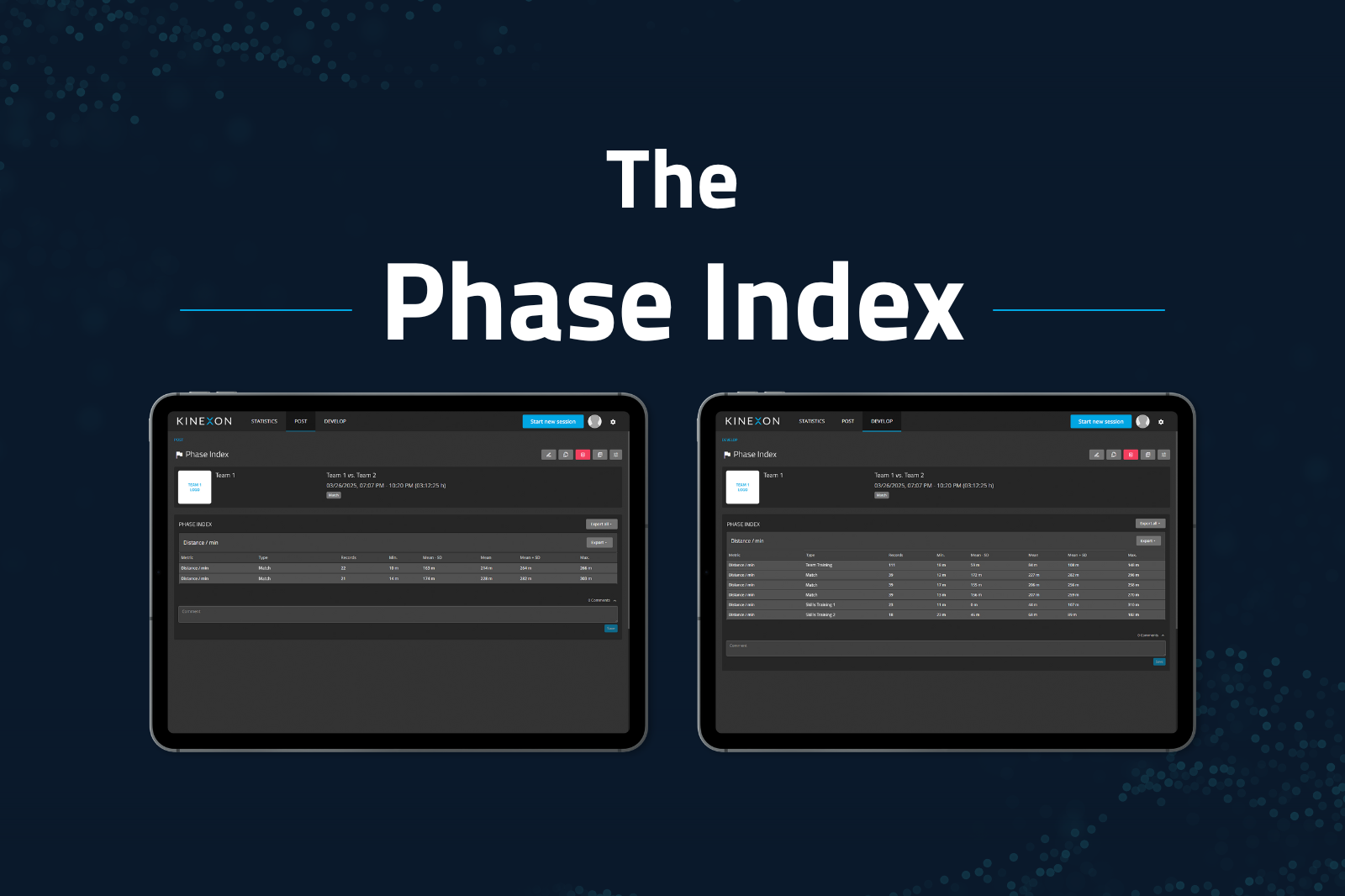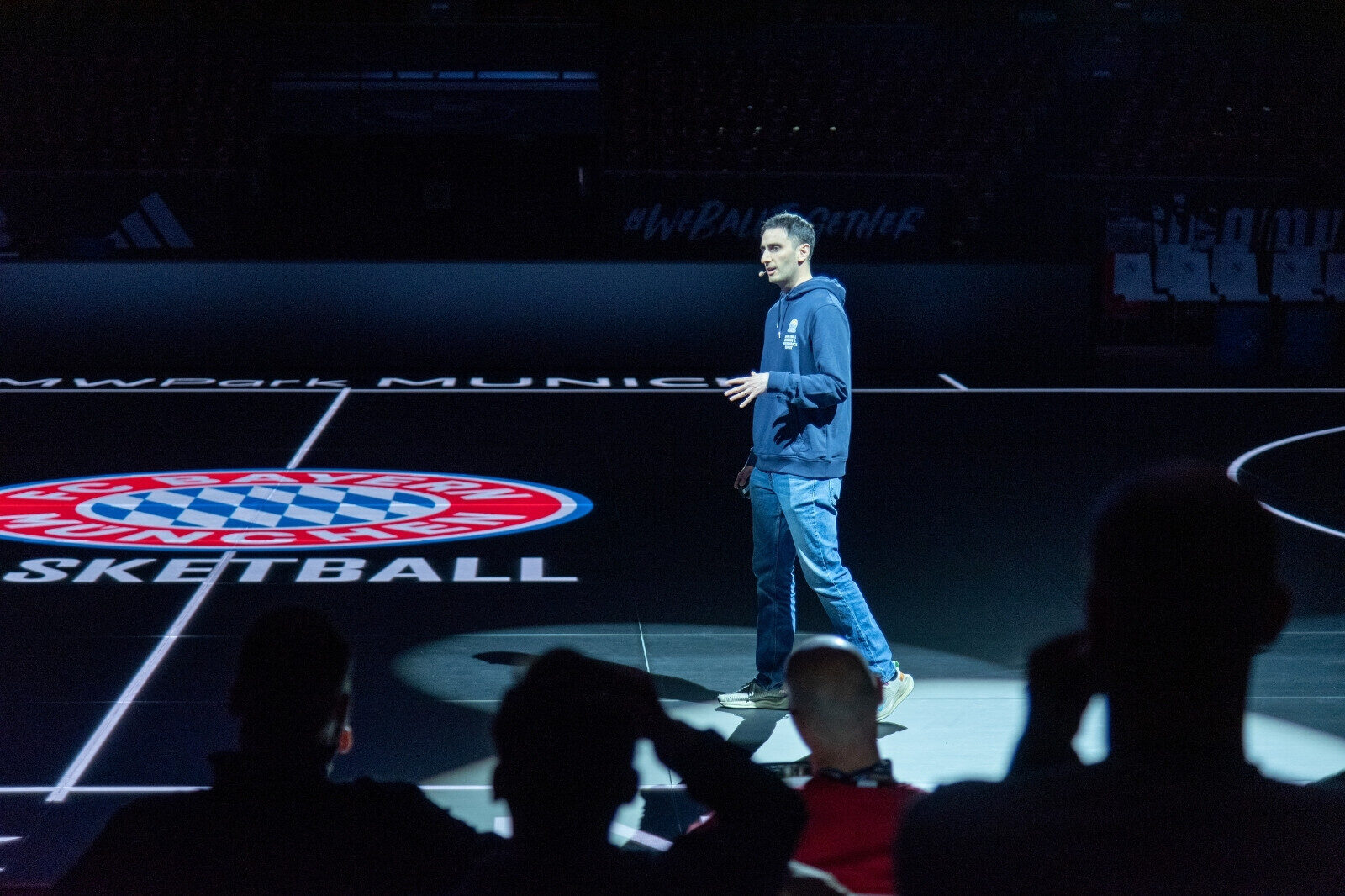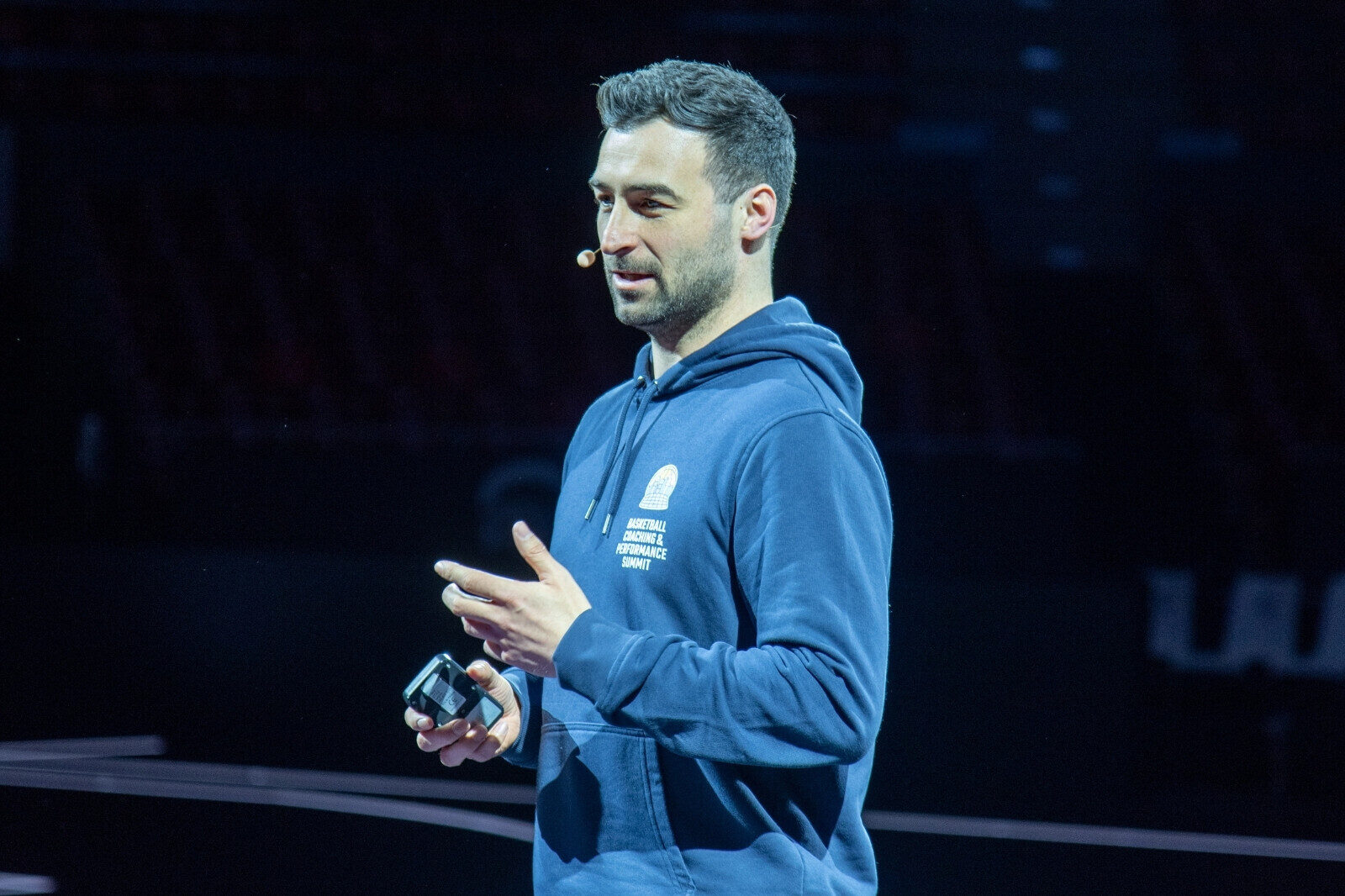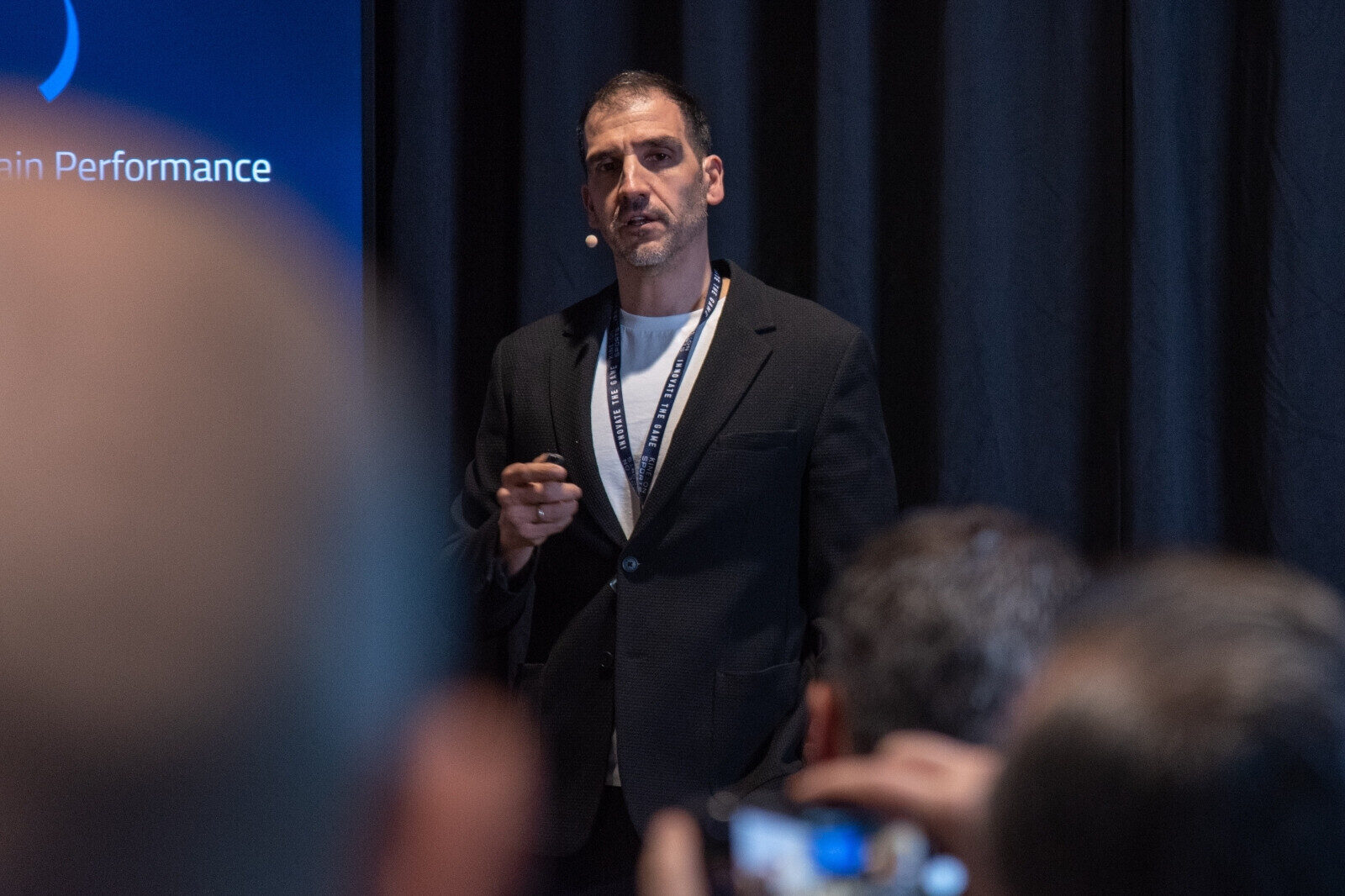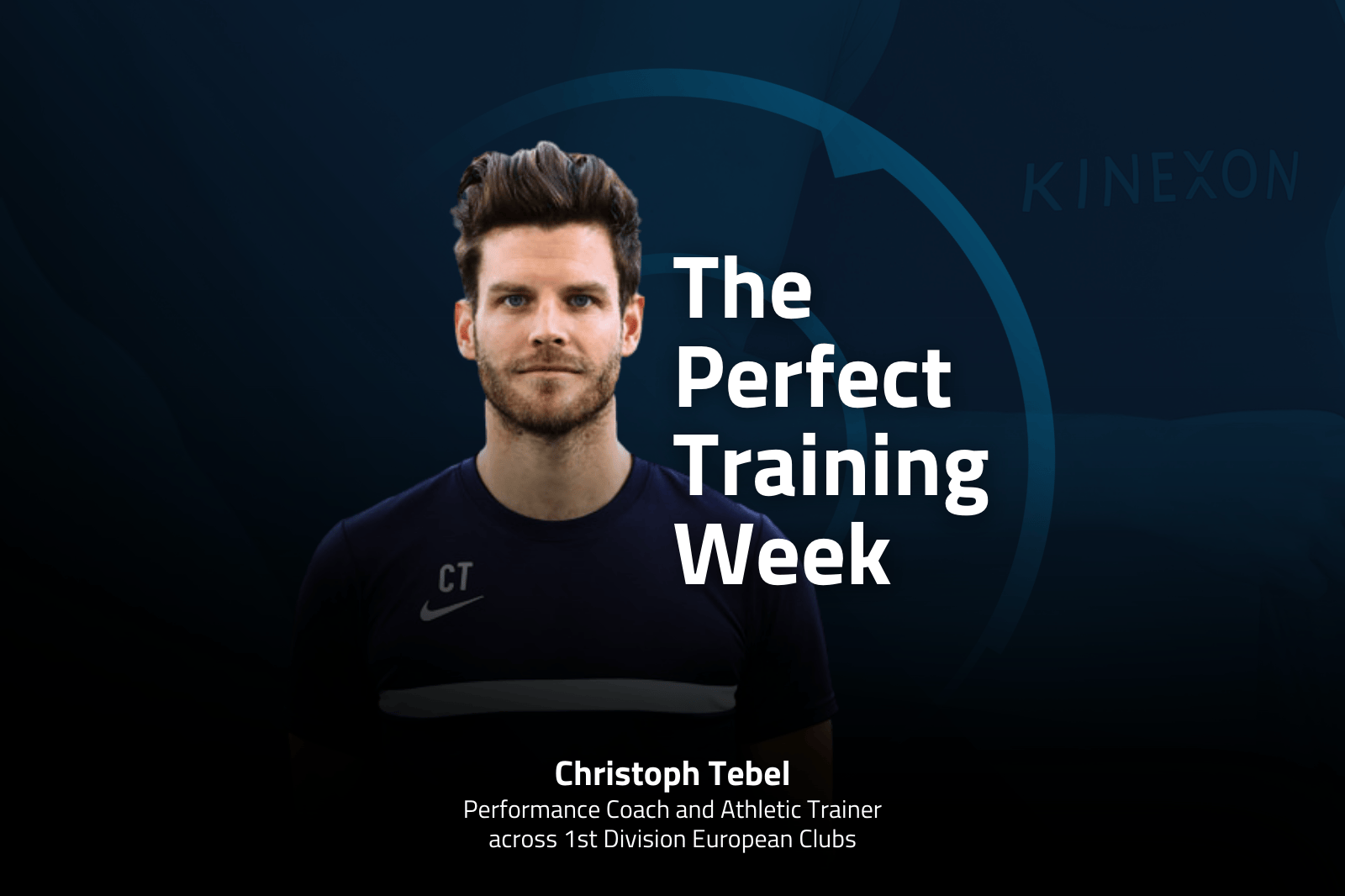How To Track Basketball Analytics
KINEXON PERFORM is the premier solution for performance profiling, conditioning, training loads, and injury management. As a result, more than 80% of NBA teams and more than 50 top NCAA men’s and women’s programs, as well as professional teams across Europe and Asia all rely on KINEXON to take their performance to the next level.
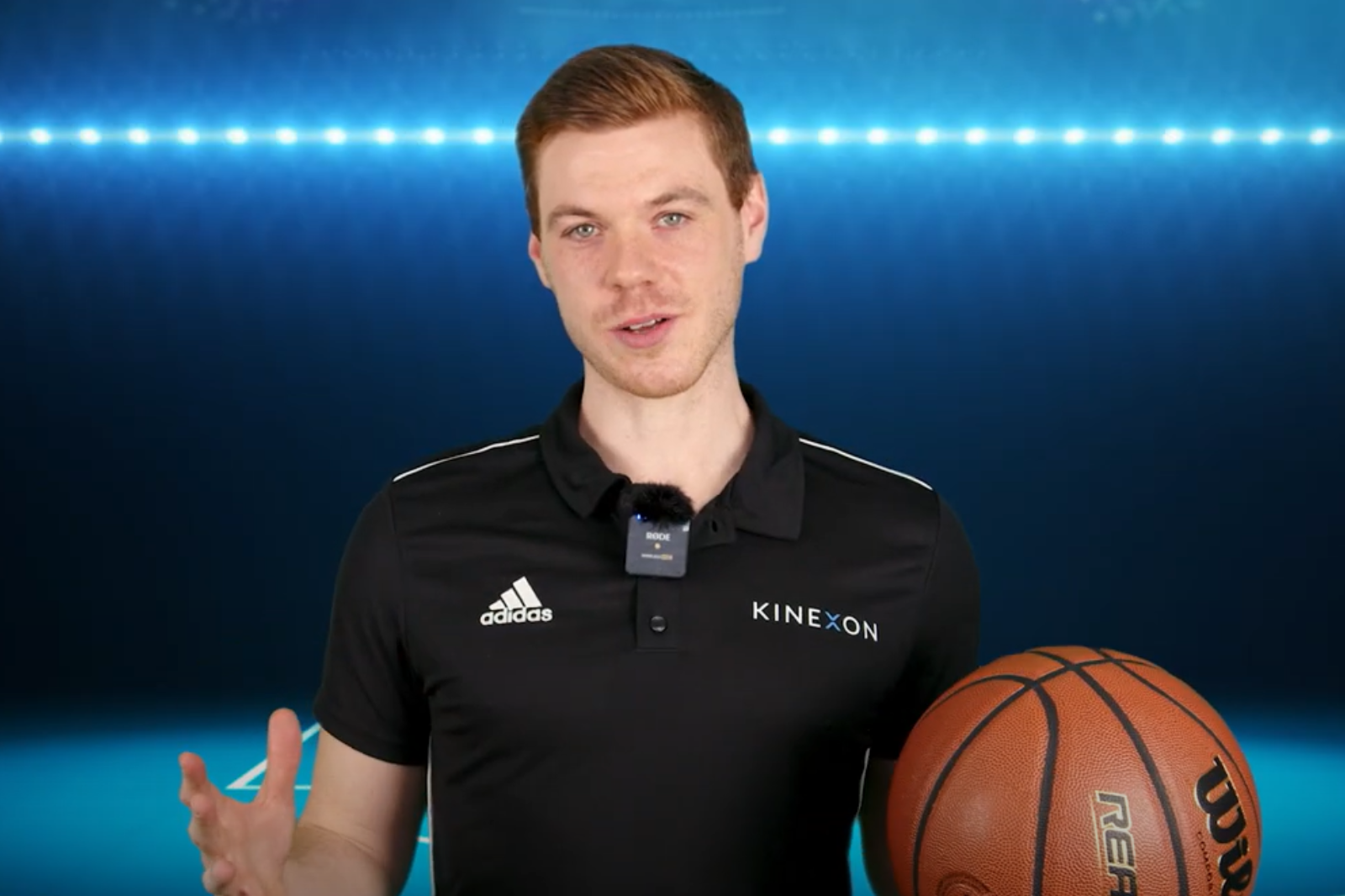
René Prüßner (Head of Sports Science at KINEXON) introduces you to the world’s leading live tracking and basketball analytics solutions.
Before you watch the video, here’s a little more information on gathering basketball analytics with IMU, LPS, and how they can be used together by coaches and athletic trainers.
What is IMU in Basketball?

IMU (Inertial Measurement Unit) player tracking in basketball refers to the use of a sensor and motion capture technology to monitor and analyze the movements of basketball players during games or practice sessions.
By attaching an IMU sensor to a player’s body (such as the waist), it is possible to capture data related to their speed, acceleration, deceleration, changes in direction, and even jumps.
What is LPS Player Tracking in Basketball?
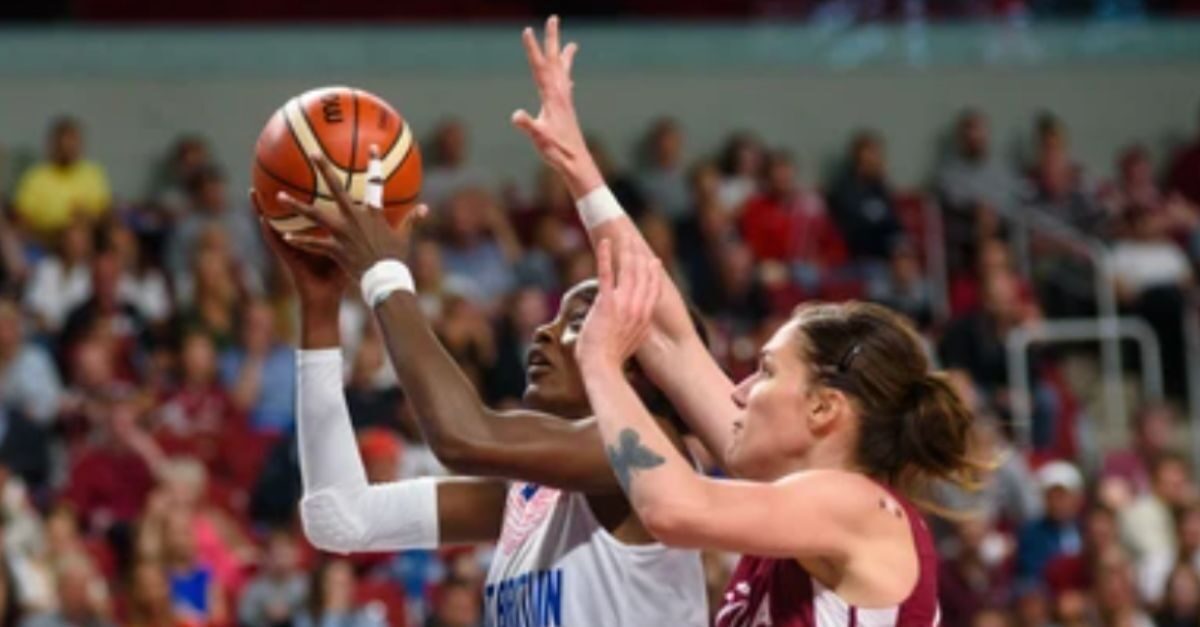
LPS (Local Positioning System) player tracking in basketball refers to the use of advanced tracking technologies, typically based on radio frequency or electromagnetic signals, to monitor and record the precise location and movements of basketball players on the court.
Unlike IMU player tracking, which relies on inertial sensors attached to the player’s body, LPS player tracking involves the installation of multiple sensors or beacons around the basketball court.
Combine IMU and LPS for Player Tracking

Integrating these two tracking systems can provide a more comprehensive and accurate analysis of player movements and performance on the court. By combining IMU and LPS technologies, you can leverage the strengths of each system.
Once the data is properly integrated, it can provide coaches, sports data analysts, and athletic trainers with comprehensive insights into player performance, allowing for better decision-making, training optimization, and strategic planning.
See How IMU and LPS Work
You can learn how to track basketball analytics using IMU, LPS, or IMU and LPS together in the video above. Here is a breakdown of where you’ll find information on each.
01:12 KINEXON PERFORM IMU — the mobile Basketball player tracking system
04:01 KINEXON PERFORM LPS - Basketball’s gold standard of live player tracking
06:44 KINEXON LPS + IMU — high-quality live data + mobile player tracking
08:22 Insights from the NBA
If you need more information on basketball player tracking systems, contact us at any time. Or, if you’d like to learn about our newest innovation, that turns your basketball tracking camera into a tool to track basketball analytics, click the link below. COMPETE Vision takes a recording of a practice or game and adds the data you’re looking for.
In fact, it’s the first basketball tracking solution to combine performance and load metrics with shot stats
Start getting sports data analytics from your practice and game video with COMPETE Vision. Click the link below for more information:

